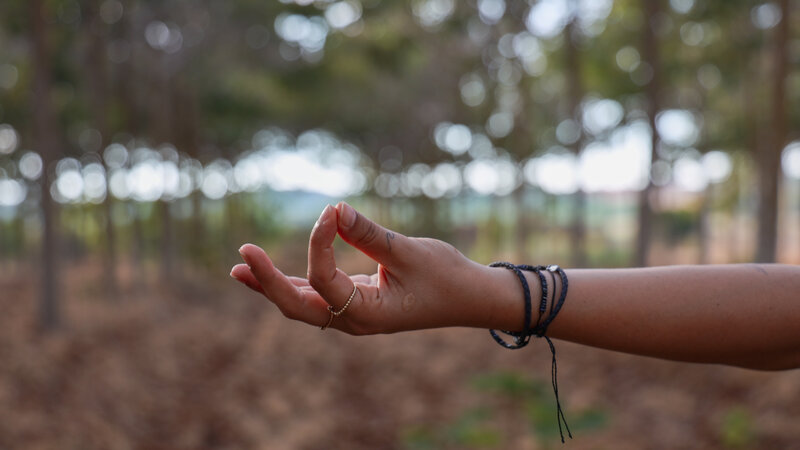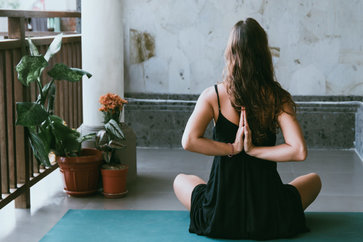How To Keep Every Part Of The Body Healthy Through Yoga
Most of us have probably experienced feelings of being overwhelmed, stressed, anxious, and fearful. Whether you experience these feelings situationally or are dealing with symptoms of clinical anxiety.
In this case, yoga can be a calming retreat for you from the constant restriction of negative thoughts, somatic symptoms, and overwhelming emotions with any level of stress.
Automatic negative thoughts are one of the primary symptoms of anxiety. Plagued by past experiences, they eventually turn into deep beliefs about themselves and through repetition begin to identify with you.
By becoming aware of the origins of these stories (no matter how far back they go), their grip on your present life will begin to loosen. But instead of brushing off worrying thoughts and feelings (which is our tendency to do) you can embrace them and come to terms with your story.
By embracing the following three limbs of yoga, you can learn to respect your thoughts and feelings for what they really are.
1. Pranayama (Mindful Breathing)
Breathing intentionally changes how you breathe. When you experience anxiety, your sympathetic nervous system takes over. This activates the body’s fight-or-flight response, triggering rapid and shallow breaths.
However, practicing mindful breathing helps the body go from a fight-or-flight response to a relaxed response of the parasympathetic nervous system. When you practice pranayama, you are harnessing the life force that feeds your mind, body, and soul.
By inhaling the breath, you also slow down the mind which, in turn, allows you to realize the true story of your identity. You will have a greater understanding of the origins of your negative beliefs so that you can identify what you need to fix.
To practice pranayama, you can start by counting your breaths. Breathe in for a count of 3 or 4 – inhale from the base of the diaphragm, filling the abdomen and lungs. Then exhale for a count of 3 or 4 – emptying the lungs, stomach, and diaphragm.
Breathe in and out in this manner for 10 breaths. If you lose track of the number of breaths, start from the beginning.
2. Asana (Asana)
Anxiety disrupts the flow of energy in the body and causes somatic symptoms, such as tension in the shoulders, back pain, headaches, and even GI issues. The practice of stretching and warming up asanas can help to release trapped tension in the body, while alternatively, the practice of purifying and cooling asanas can help cool the body and slow breathing.
Sometimes when we’re experiencing high levels of anxiety and the nervous energy gets trapped in the body, those cool, relaxing yoga poses can be best. Therefore, it is highly beneficial to gradually practice Surya Namaskar (Surya Namaskar A or B) to loosen that trapped energy.
Wheel Pose – aka Urdhva Dhanurasana – (Urdhva Dhanurasana) or Bridge Pose (Setu Bandha Sarvangasana) is not only energizes but also reduces tension in the body. Since anxiety stimulates the body and mind, asanas for anxiety focus on cooling the body and slowing the breath on the release of excess energy.
Restorative poses such as Child’s pose (Balsana), Seated Forward Fold (Paschimottanasana), and a supported bridge pose with props or blankets, are far more cooling for the body. When practicing these asanas, focus on lengthening the exhalation and increasing the length of the pause between inhalation and exhalation to help slow the breath.
Sitting and supine twists can release the tension stored in the core while soothing the stomach, all of which will have a positive effect on your anxiety and stress.
3. Dhyana (Meditation)
Meditation allows you to take some quiet time for yourself to focus your attention on your breath, mantra, or some other point, and witness your thoughts and feelings as an observer.
The practice of meditation will train your mind and body to be mindful of the present moment so that you can increase your awareness of the thoughts and feelings that contribute to your anxiety.
Using breathing in meditation helps you stay in the present, rather than dwelling in the past or future. Using a mantra can help you shift your focus from thoughts of worry to peace and relaxation.
Pay attention to the word relax with each inhale and each exhales. Focus on the word gratitude as you inhale and exhale, to be grateful to your mantra. This will change negative thought patterns, allowing you to notice every little surprise in your life.


























